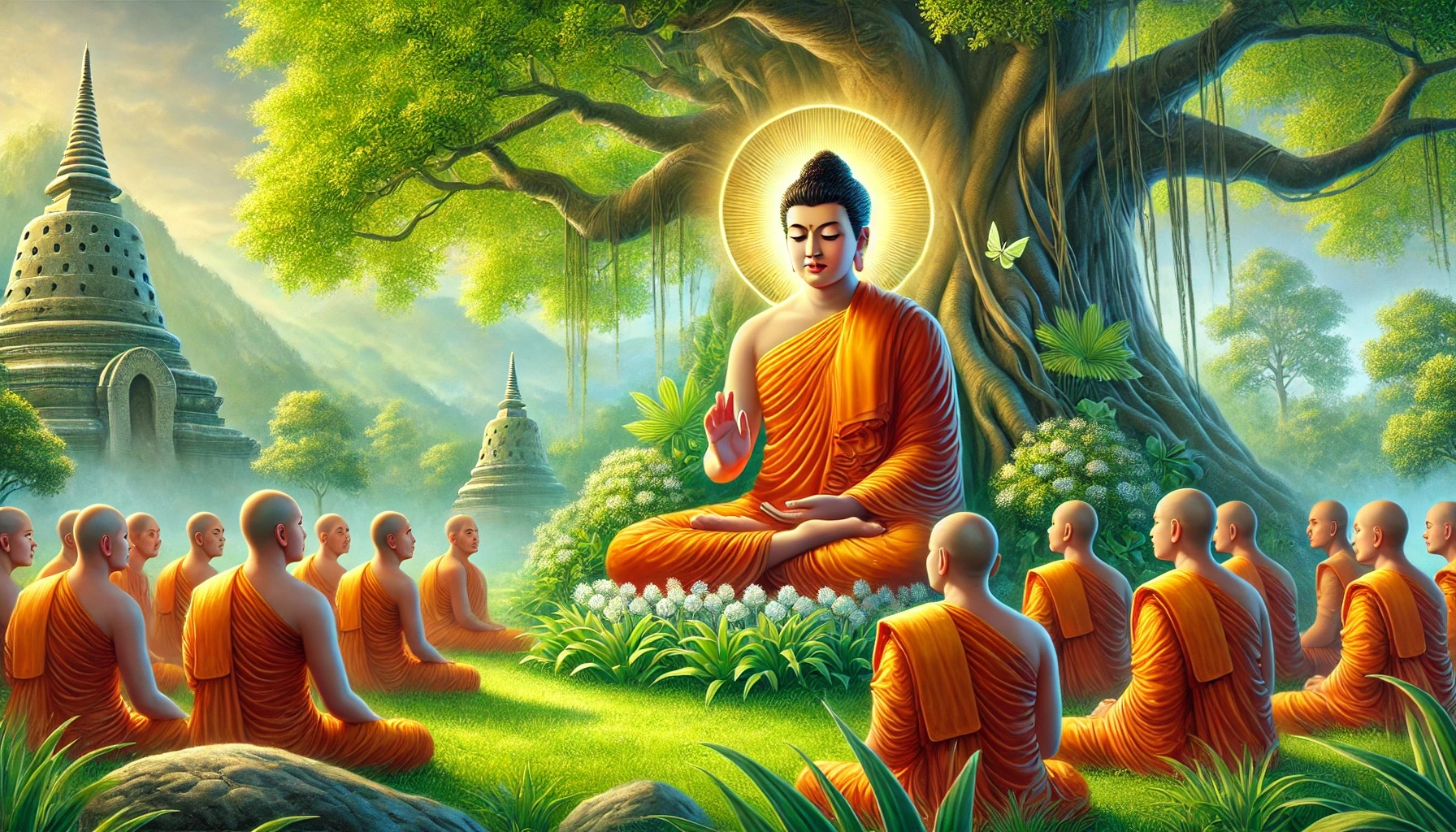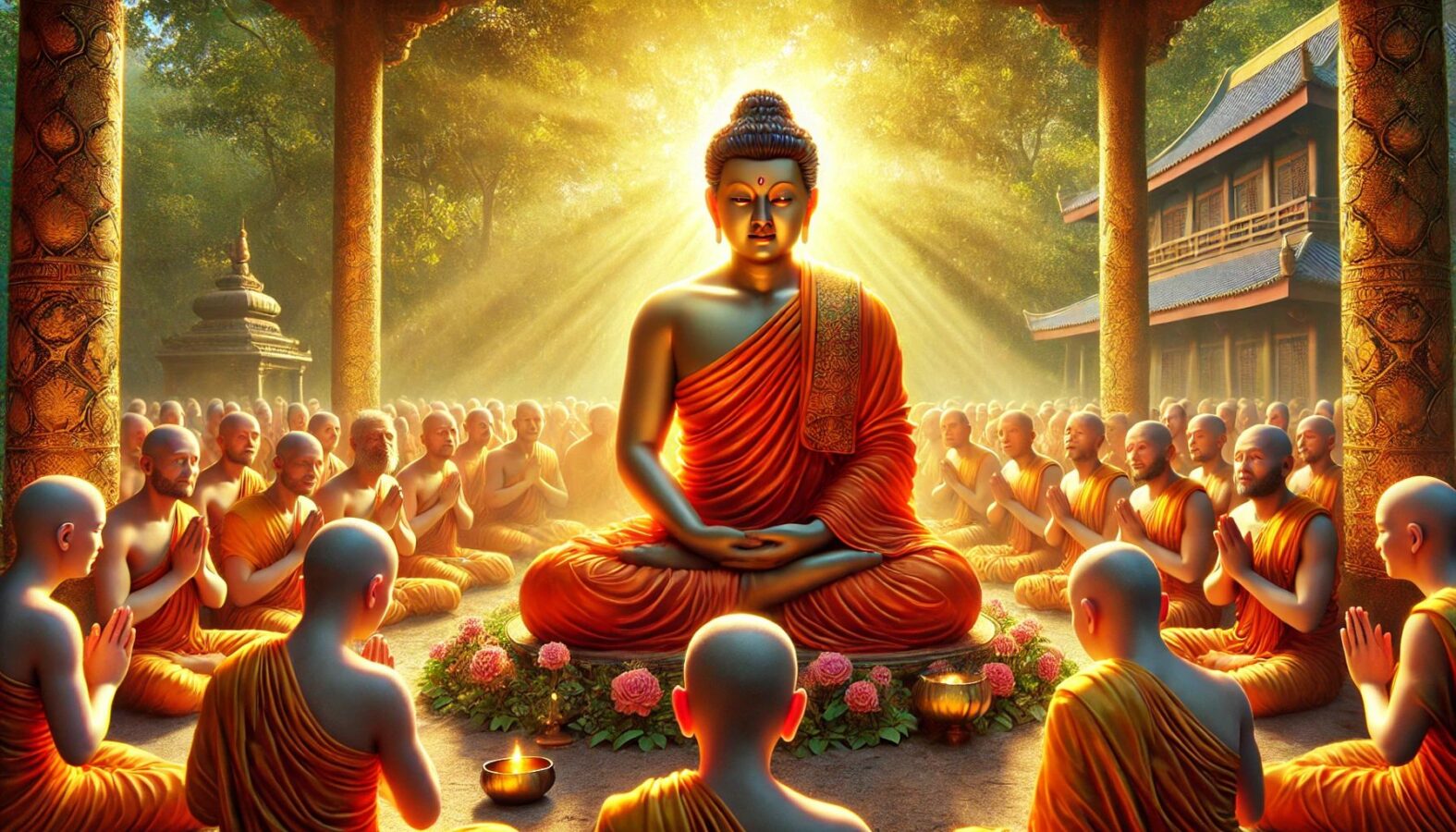
Date: 10/05/2024 10/06/2024
Location: Star Ocean Meditation Center
Teacher: Otto Huang
Dharma Talk
Knowledge that can only exist dependent on body and mind
Once, while the Buddha was teaching the monks in the Jeta Grove, Anathapindika’s Monastery in Shravasti, he said:
“Monks! Plants propagate through five methods. What are these five methods? Some propagate from roots, called root seeds; some propagate from stems, called stem seeds; some propagate from nodes, called node seeds; some propagate from fallen leaves that take root, called self-fallen seeds; and some propagate from seeds that germinate, called real seeds.
If these five types of seeds are not spoiled or rotten and are sufficiently mature, they can germinate and grow when they encounter soil and water.
Monks! These seeds are like the consciousness that gathers the aggregates.
The soil is like the four bases where consciousness dwells.
The water is like the craving attachment of consciousness.
Where do the consciousnesses of craving attachment dwell? They dwell in form, feeling, perception, and volition, and they grow and proliferate through the nourishment of craving.
Monks! If it is said that consciousness can dwell without form, feeling, perception, and volition, that is impossible and would only increase confusion.
Monks! If you can cut off the craving for form, then once the craving is cut off, the dwelling place for form is blocked, the bond between consciousness and form is cut off, and consciousness loses its dwelling place. Once it loses its dwelling place, it cannot grow and proliferate. The same applies to the other three bases of consciousness: feeling, perception, and volition. As long as craving is cut off, the bond between consciousness and the four bases is lost, and consciousness loses its dwelling place. Without a dwelling place, consciousness cannot grow and proliferate, leading to liberation. Once liberated, there is no attachment to anything in the world. Because there is no attachment, one knows that Nirvana has been attained and says: ‘My birth and death have come to an end, pure practice has been established, what should be done has been accomplished, and I know I will not be reborn again.’
The consciousness that does not cling to the next life will not wander everywhere, but will only see the dependent origination of the right Dharma and desire to enter Nirvana, extinction, tranquility, purity, and truth.”
Once, after completing his meditation, Venerable Sariputta went to see Venerable Mahakotthita in the evening. After greeting each other, Venerable Sariputta asked Venerable Mahakotthita:
“Friend Kotthita! Does aging occur?”
“Friend Sariputta! Yes, it does.”
“Friend Kotthita! Does death occur?”
“Friend Sariputta! Yes, it does.”
“Friend Kotthita! Is aging and death due to one’s own actions, the actions of others, or a combination of both, or is it due to neither cause nor condition?”
“Friend Sariputta! Aging and death occur because of birth.”
“Friend Kotthita! Is birth due to one’s own actions, the actions of others, or a combination of both, or is it due to neither cause nor condition?”
“Friend Sariputta! Birth occurs due to the maturation of the accumulated karma of existence.”
Thus, Venerable Sariputta continued to question, and Venerable Mahakotthitacontinued to explain: “Existence is formed due to clinging; clinging is formed due to craving; craving is formed due to feeling; feeling is formed due to contact; contact is formed due to the six sense bases; the six sense bases are formed due to name and form; name and form are formed due to consciousness.”
“Friend Kotthita! Is the formation of consciousness due to one’s own actions, the actions of others, or a combination of both, or is it due to neither cause nor condition?”
“Friend Sariputta! The formation of consciousness is due to the union of name and form.”
“Friend Kotthita! Earlier you said that name and form are formed due to consciousness, and now you say that consciousness is formed due to name and form. What does this mean? How should it be understood?”
“Friend Sariputta! Let me use an analogy to explain. For example, if you want to erect three reeds in an open field, the three reeds must rely on each other to stand. If one reed is removed, the other two will not be able to stand, and the removed reed will not be able to stand either. The relationship between consciousness and name and form is like this; they must rely on each other to grow.”
After hearing Venerable Mahakotthita’s explanation, Venerable Sariputta was deeply impressed and praised him with various compliments, saying:
“Friend Kotthita! If a monk can teach the Dharma based on the aversion, detachment, and cessation of aging and death, birth, existence, clinging, craving, feeling, contact, the six sense bases, name and form, and consciousness, he can be called a Dharma teacher monk. If he practices according to the aversion, detachment, and cessation of aging and death, and so on, he can be called a monk who practices the Dharma in sequence. If he attains liberation without clinging to aging and death, and so on, he can be called a monk who has attained Nirvana in the present life.”

